The northern lights danced across the US last night. It could happen again Saturday.
Amazing auroras sparked by a massive solar storm — the strongest in decades — set the world abuzz Friday night as colorful glowing light radiated into the skies as far south as Florida and the Bahamas, to the surprising delight of many who waited up and kept watch.
And good news for anyone who missed it: You may get another chance Saturday night or Sunday.
"Overnight, aurora were visible across much of the United States. Weather permitting, they may be visible again tonight," the Space Weather Prediction Center said in a Saturday morning update. A later update suggests the possibility of widespread viewing in the U.S. on Sunday too.
(A word of caution, experts have previously told USA TODAY that forecasting space weather is difficult. Researchers must rely on observations of the 93-million-miles-away sun to make their predictions.)
Northern lights are only visible at night time, and experts say it's best to view them away from the hustle and bustle of city life to get the best show. Still, Americans in cities said they could see the lights overnight, including in metro Detroit.
Wisconsinites got to see the lights dance across the sky in green and purple hues. Even residents of downtown Milwaukee caught a glimpse despite the bright city lights obstructing the view.
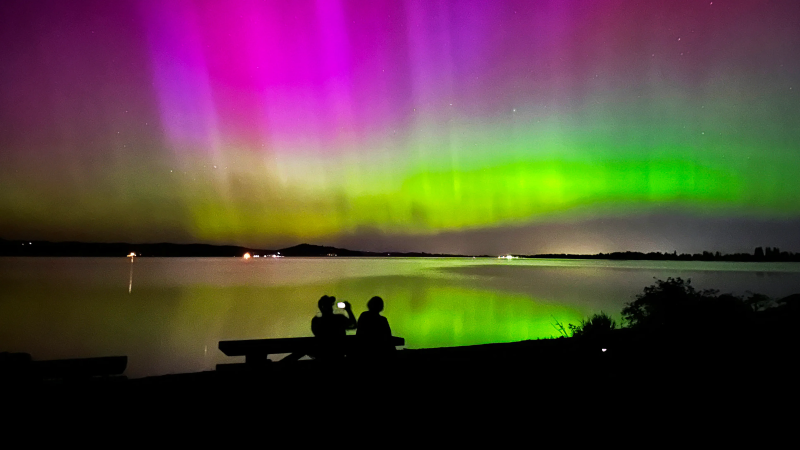
See photos:Northern lights on full display across US, Europe on Friday
Will the aurora be visible this weekend?
It could be.
The Space Weather Prediction Center offers an experimental forecast map that showed on Saturday the aurora may be visible Saturday in a wide swath of the U.S., possibly in states including Oregon, Nebraska, Indiana, Pennsylvania and New York. But visibility will depend on shifting factors that include weather.
For Sunday, space weather forecasters said the aurora could become visible again over the northern half of the country, with sights extending as far south as Alabama and northern California. The effects of that storm are expected to arrive Sunday morning ET.
What is the cloud forecast Saturday night? Will clouds block the northern lights?
If you missed the aurora borealis Friday night, you might still catch a glimpse on Saturday or Sunday, depending on where you live. But not if clouds get in the way.
The cloud forecast for Saturday night is generally good for most of America, but some of the people who missed their chance last night due to clouds may have a similar problem Saturday, said AccuWeather senior meteorologist Tom Kines. Areas that are likely to be cloudy include New England and Mid-Atlantic regions, as well as parts of the Southern Plains, including Oklahoma, Kansas and Colorado.
“Even just a few breaks in the clouds will allow the aurora to be visible,” Kines said. “There’s always hope.”
Peak visibility time Saturday night will be between 9 p.m. and midnight, with some chance until 2 a.m., Kines said. The best views will be in dark areas away from the light pollution of cities, he said, though some reported seeing the auroras Friday night from metro areas like Milwaukee and Detroit.
Sunday night, if there is any aurora to see, those in the Northeast and Mid-Atlantic can rejoice, because Kines said the skies should be clearer.
What is causing the northern lights this weekend?
The spectacle is being caused by geomagnetic storm that erupted from a sunspot cluster on the sun.
The storm was unusually strong — classified as "extreme" (or a G5) storm, the highest level, the Space Weather Prediction Center said Friday evening. It's the first G5 storm to hit our planet since 2003.
The geomagnetic storm's effects (which aren't all as pretty as the northern lights) are likely to linger through the weekend. The Space Weather Prediction Center said the storm is likely to continue through Sunday.
"There have been reports of power grid irregularities and degradation to high-frequency communications and GPS," the Space Weather Prediction Center said in a Saturday morning update.
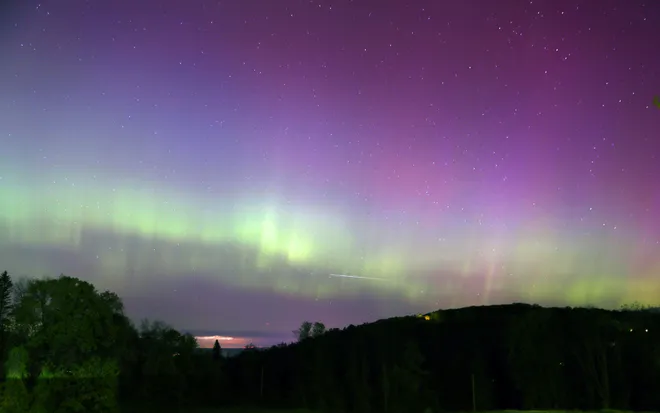
Where were the northern lights seen on Friday night?
Across much of the United States and Europe where skies were clear — as far south as Florida, Oklahoma, Texas and Arizona.
To the great disappointment of many in the Northeast and Mid-Atlantic regions, cloud cover dimmed or obstructed the stunning display altogether.
Although it's unusual, auroras have been seen in the far southern United States in the past. This happens when a particularly large coronal mass ejection arrives in the Earth's outer atmosphere, triggering a geomagnetic storm, NOAA reports.
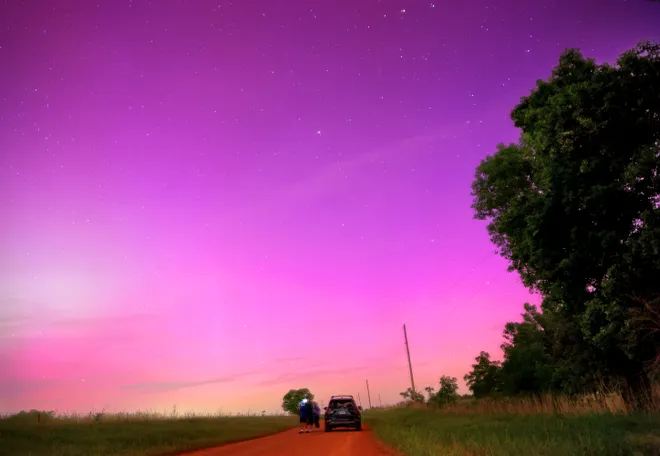
On the night of Nov. 5-6, 2001, aurora displays were seen in Texas and Arizona.
What causes the aurora?
NASA describes an aurora as an "intricate dance of particles and magnetism between the Sun and the Earth."
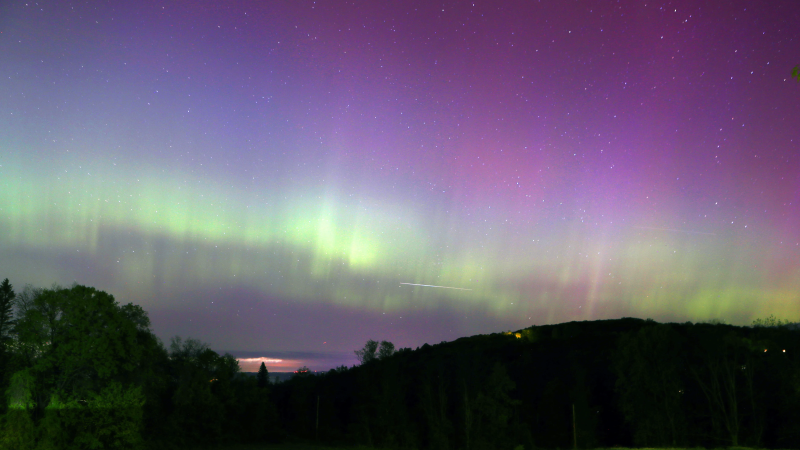
The Sun's activity creates strong electrical currents known as geomagnetic storms.
These eruptions are mostly happening at a large, complex sunspot cluster, NOAA'S Space Weather Prediction Center said. Sunspots, which increase and decreaseon a 11-year cycle, are areas where the magnetic field is about 2,500 times stronger than Earth's.
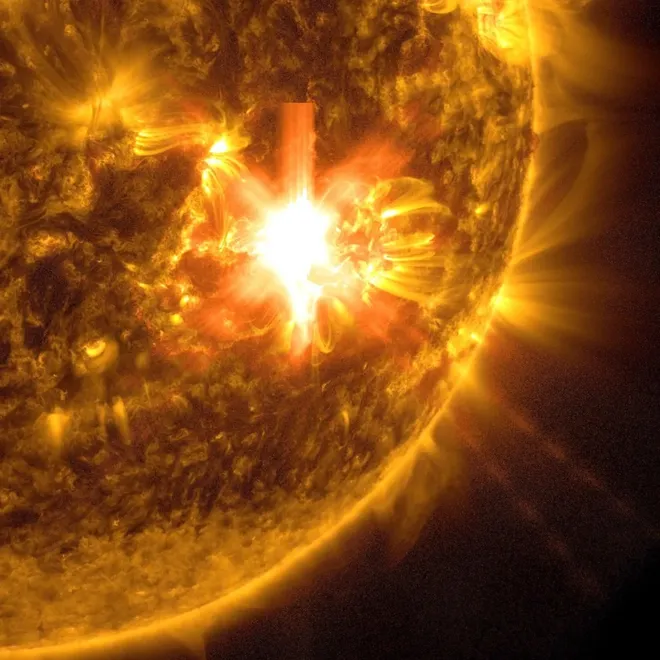
The reason the auroras move is because of how the Sun's ionized gases interact with the Earth's magnetic field.
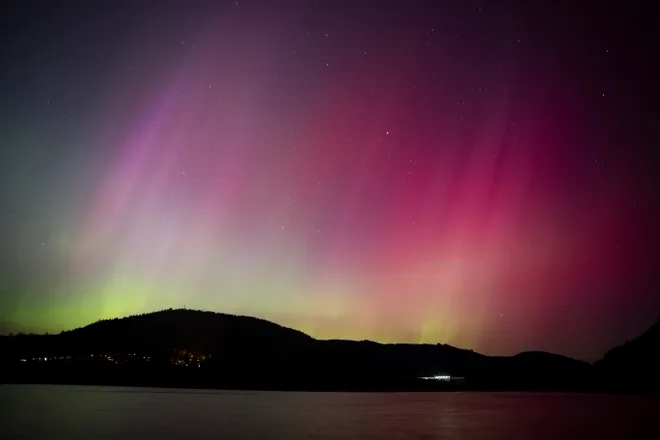
If you took a great photo, NASA wants to know
In a collaboration with the National Science Foundation and the New Mexico Consortium aurora sightings and photos are being collected at the Aurorasaurus web page.
Why was the aurora borealis so red on Friday?
Mike Theiss, an extreme nature photographer and hurricane storm chaser, who lives in Florida was shocked to see posts Friday night about how far south people were seeing the auroras. To his amazement, he was able to step out of his front door in Key Largo in the Florida Keys and see and photograph the aurora. Hours later he was still incredulous, and surprised at the colors in the aurora.
"I’ve documented the Northern Lights in Iceland, North Dakota, Arctic Circle in Canada but never this red color," Theiss said. "This is the first time I’ve seen red."
The multiple colors seen in auroras are related to the types of gas being bombarded at various levels above the Earth. Auroras occur within one of Earth's upper atmosphere layers, the thermosphere, according to the University Corporation for Atmospheric Research.
Solar particles trapped there interact with various gas molecules, such as nitrogen and oxygen, according to the research corporation's website. Oxygen gives off green and red lights, while nitrogen glows blue and reddish purple. For example, nitrogen gas glows blue at 75 to 110 miles altitude.
The less common red auroras form from interacting with higher altitude oxygen molecules, the website explains.
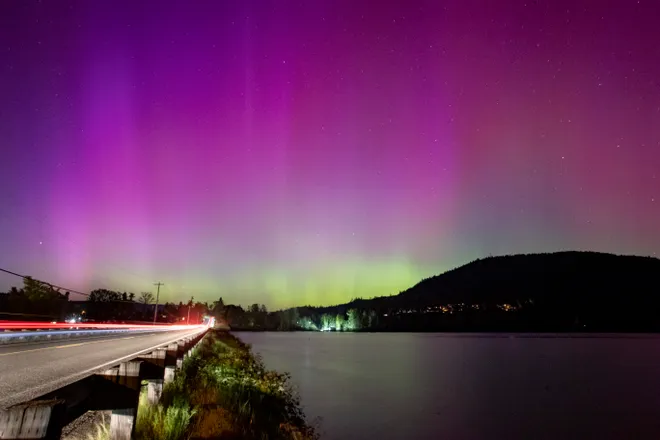
'Two incredible spectacles of the universe': Northern lights come about a month after eclipse
Seeing the aurora amazed Antonella Fruscione, an astrophysicist at Harvard University. She sent photos of the sight as well as the April total solar eclipse to her friends in Italy.
"And I sent them the picture that I took at the solar eclipse and I said, 'Can you imagine how fortunate I was this year, one month apart, I see these two incredible spectacles of the universe,'" she recalled telling them.
The phenomena seen Friday and possibly Saturday night is unusual, she said.
"It's a very rare occurrence, especially because last night it was really visible," Fruscione said.
What was the Halloween storm in October 2003?
Over two decades ago in late October 2003, three massive sunspot groups appeared on the sun's surface with little warning, accompanied by 17 major solar flares, according to the National Centers for Environmental Information.
Satellites, radio and GPS systems went on the fritz around the world, causing some major disruptions. But it also offered a stunning view of the auroras as far south as California and Florida. People in Australia and Mediterranean countries even caught a glimpse.
Contributing: Doyle Rice and Krystal Nurse, USA TODAY
Disclaimer: The copyright of this article belongs to the original author. Reposting this article is solely for the purpose of information dissemination and does not constitute any investment advice. If there is any infringement, please contact us immediately. We will make corrections or deletions as necessary. Thank you.





